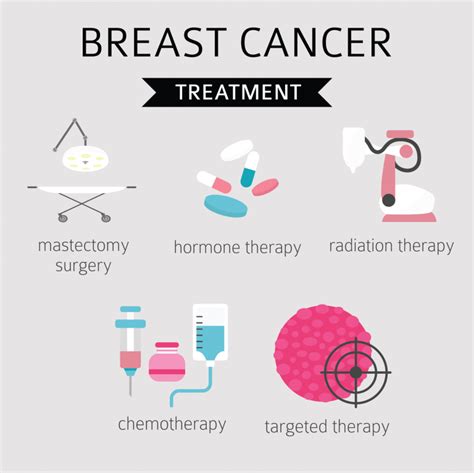Intro
Discover 5 key facts about lumpectomy, a breast-conserving surgery, including its benefits, risks, and recovery process, to make informed decisions about breast cancer treatment and care.
Lumpectomy, also known as partial mastectomy, is a surgical procedure that involves the removal of a breast tumor and a small margin of surrounding tissue. This procedure is often performed to treat early-stage breast cancer, and it's considered a breast-conserving surgery, as it aims to preserve as much of the breast tissue as possible. The importance of understanding lumpectomy lies in its potential to offer a less invasive alternative to mastectomy, allowing patients to maintain a more natural appearance and potentially reducing the psychological impact of breast cancer treatment.
Breast cancer is one of the most common cancers among women worldwide, and the treatment options can be overwhelming. Lumpectomy is a significant procedure in the arsenal against breast cancer, offering hope for those diagnosed with early-stage disease. By choosing lumpectomy, patients may avoid the more extensive surgery of a mastectomy, which removes the entire breast. This can be a critical factor in the decision-making process for many women, as it affects not only their health but also their self-esteem and body image.
The decision to undergo a lumpectomy is multifaceted, involving considerations of the cancer's stage, size, and location, as well as the patient's overall health and personal preferences. Understanding the specifics of lumpectomy, including its benefits, risks, and what to expect during and after the procedure, is essential for anyone facing this decision. This knowledge can empower patients to make informed choices about their care, ensuring they receive the most appropriate treatment for their unique situation.
What is Lumpectomy?

Benefits of Lumpectomy
The benefits of choosing lumpectomy over more radical surgeries like mastectomy are numerous. They include the preservation of the breast, which can have psychological benefits for the patient, as well as the potential for less postoperative pain and a quicker recovery time compared to more extensive surgeries. Additionally, because lumpectomy is less invasive, it may result in fewer complications and a more natural appearance of the breast after surgery.How Lumpectomy is Performed

Recovery and Follow-Up
Recovery from a lumpectomy is generally straightforward, with most patients able to return home the same day as the surgery. There may be some discomfort, swelling, and bruising, which can be managed with pain medication and ice packs. It's essential for patients to follow their healthcare provider's instructions regarding wound care and to attend all scheduled follow-up appointments to monitor healing and check for any signs of cancer recurrence.Risks and Complications

Factors Influencing the Decision for Lumpectomy
Several factors can influence the decision to undergo a lumpectomy, including the size and location of the tumor, the stage of the cancer, the patient's overall health, and personal preferences regarding breast conservation. For smaller tumors, especially those that are early-stage and located in an area that allows for easy removal without significantly altering the breast's appearance, lumpectomy may be an ideal option. However, for larger tumors or those in more complex locations, mastectomy might be recommended.Advancements in Lumpectomy Techniques

Psychological Impact and Support
The psychological impact of undergoing a lumpectomy should not be underestimated. Patients may experience anxiety, fear of recurrence, and concerns about body image. It's crucial for healthcare providers to offer support and connect patients with resources such as counseling, support groups, and educational materials to help them navigate these challenges. The preservation of the breast through lumpectomy can have a positive effect on a patient's self-esteem and body image, but individual responses can vary, and comprehensive support is essential.Future Directions in Breast Cancer Treatment

Conclusion and Next Steps
In conclusion, lumpectomy is a significant option for the treatment of early-stage breast cancer, offering the potential for breast conservation and less invasive surgery. Understanding the procedure, its benefits, risks, and what to expect is crucial for patients facing this decision. As research continues to advance the field of breast cancer treatment, patients can look forward to more effective and personalized care options. For those who have undergone lumpectomy, staying informed about their health, following up with healthcare providers, and seeking support when needed are key steps in navigating the journey towards recovery and wellness.What are the primary benefits of choosing lumpectomy over mastectomy?
+The primary benefits include the preservation of the breast, potentially less postoperative pain, a quicker recovery time, and a more natural appearance of the breast after surgery.
How long does it typically take to recover from a lumpectomy?
+Most patients can return home the same day as the surgery and resume their normal activities within a few days to a week, although this can vary based on individual circumstances.
Is lumpectomy suitable for all breast cancer patients?
+No, lumpectomy is generally recommended for patients with early-stage breast cancer and smaller tumors relative to the size of the breast. The suitability of lumpectomy depends on several factors, including the size and location of the tumor, the stage of the cancer, and the patient's overall health and preferences.
As you consider the information provided about lumpectomy, we invite you to share your thoughts, experiences, or questions in the comments below. Your engagement not only helps others who may be facing similar decisions but also contributes to a supportive community of individuals navigating the complexities of breast cancer treatment. Whether you're a patient, a caregiver, or simply someone interested in learning more about lumpectomy and breast cancer, your participation is valued. Let's work together to foster a deeper understanding and to support those affected by breast cancer.
